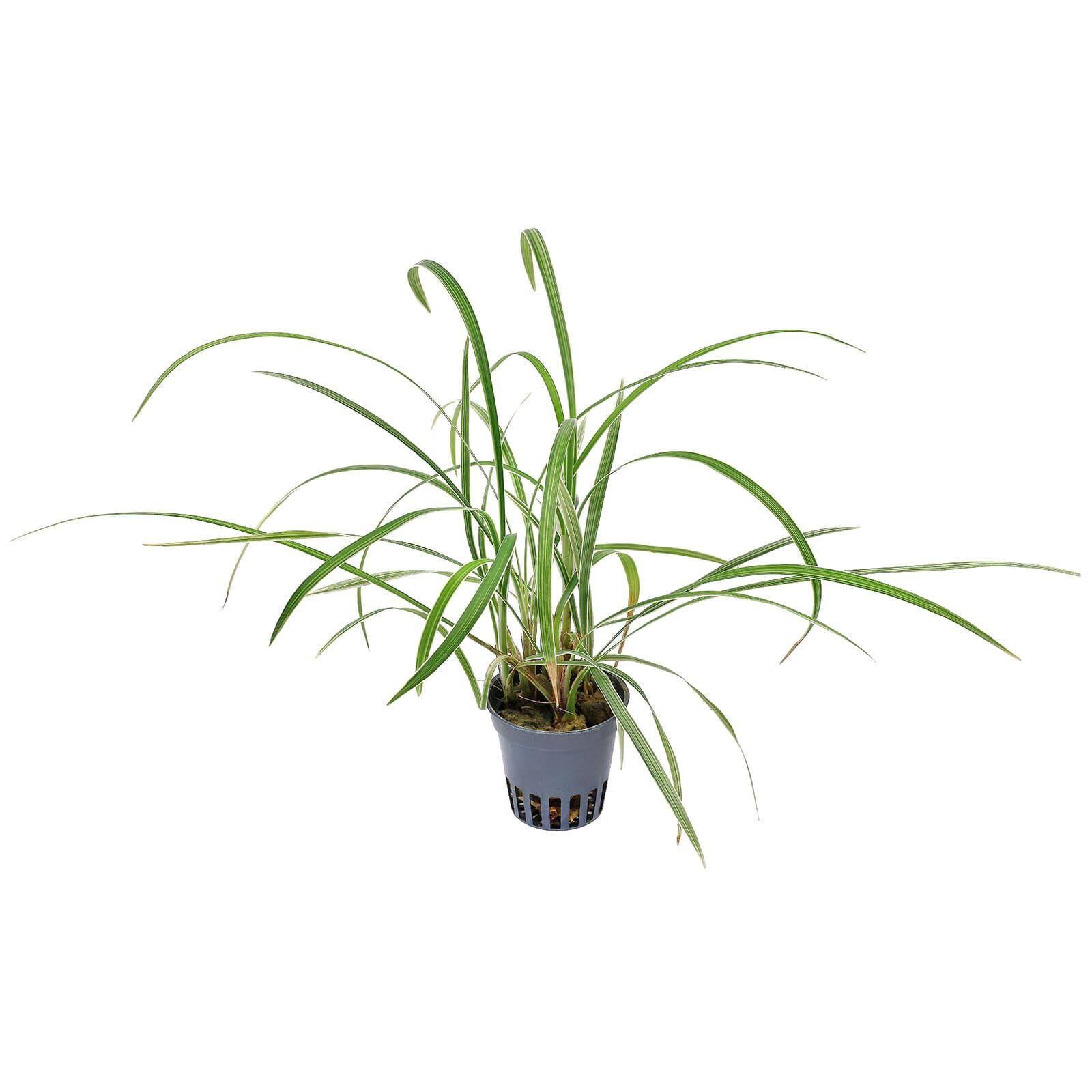White lilyturf



Ophiopogon jaburan 'Vittatus'
White lilyturf
- Robust grass-like plant
- Shade tolerant
- Cold tolerant
- Relatively low light requirement
- Tolerates low temperatures
Item question
We’re here for you!
Please enter your question and e-mail and we’ll contact you as soon as possible. It usually takes us up to 24 hours during business days to respond.
Thank you for your question!
Thank you, we’ll get in touch!
Close window
You already sent us a question.
Please wait a few minutes
Description
The Giant lily turf or Giant mondo grass, Ophiopogon jaburan, has a grass-like appearance like the Japanese snake's beard (Ophiopogon japonicus), but grows considerably larger. It is native to the southern, subtropical parts of Korea and Japan, e.g. on the Ryukyu island chain, and is now widespread as an ornamental plant in warm countries around the world. The evergreen, ribbon-shaped leaves are around 30 - 60 cm long and up to approx. 1 cm wide. They are relatively stiff, arching and stand in a dense clump. The wild type is dark green, the cultivar ‘Vittatus’ has white longitudinal stripes. This makes the White lily turf similar to the much smaller Ophiopogon japonicus ‘Variegatus’, with which it is often confused in the trade. Sometimes inflorescences appear with small, bell-shaped, white flowers arranged in an overhanging raceme.
Ophiopogon jaburan has no special substrate requirements, but grows best in loose, humus-rich soil. This should be kept slightly moist, but not waterlogged, otherwise the roots will rot. Once the plant is well established, it can be fertilised occasionally with a fertiliser for green plants. The Giant mondo grass does not need a lot of light, but prefers a bright position, but not in full sun if grown in daylight. The plant can be kept in a wide range of temperatures, ideally with cool, frost-free overwintering, but also all year round at over 20 °C. The clump gradually widens by forming daughter rosettes. Older plants can be propagated by dividing the clump.
Like the Mondo grass (Ophiopogon japonicus), Ophiopogon jaburan is a robust and shade-tolerant plant that is suitable for various types of terrarium, both tropical and cool-temperature terrariums. Growing considerably larger than Ophiopogon japonicus, it can be used as a solitary plant in medium-sized terrariums. The white striped cultivar ‘Vittatus’ brightens up gloomy terrarium areas with its striking leaf pattern.
Profile
| Ophiopogon jaburan 'Vittatus' | |
| Cultivation options | Terrestrial |
| Growth height | Approx. 30 - 60 cm |
| Temperature | Approx. 5 - 30 °C |
| Humidity | At least 40 % |
| Light requirement | Low |
| Watering | Keep moderately moist, avoid waterlogging |
| Fertilising | Houseplant fertiliser approx. every 2 - 3 weeks |
| Propagation | Splitting |
| Suitable for | Various tropical to cool temperature terrariums; forest terrarium |
| Cultivation options |
| Terrestrial |
| Growth height |
| Approx. 30 - 60 cm |
| Temperature |
| Approx. 5 - 30 °C |
| Humidity |
| Minimum 40 % |
| Light requirement |
| Low |
| Watering |
| Keep moderately moist, avoid waterlogging |
| Fertilising |
| Houseplant fertiliser approx. every 2 - 3 weeks |
| Propagation |
| Splitting |
| Suitable for |
| Various tropical to cool temperature terrariums; forest terrarium |
Terrarienpflanzen
Our terrarium plants give every terrarium an individual, natural atmosphere and at the same time provide a healthy environment for all terrarium inhabitants. Our wide range of tropical, subtropical and even arid plants are easy to combine and enhance any terrascape. Whether it's strong succulents, subtle tillandsias, eye-catching neoregelias or wonderful orchids - we offer terrarium plants for different terrascapes from rainforest to desert.
General information
Please choose a variant to see more information.
| Item no. |
|
| EAN | |
| Weight | |
| Shipping weight |
Customers ask customers
You have questions about this product? Ask other customer or our support team about this product!